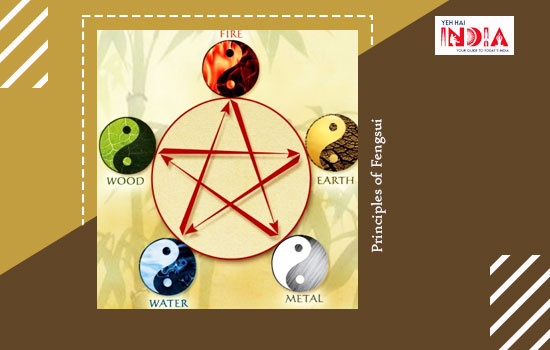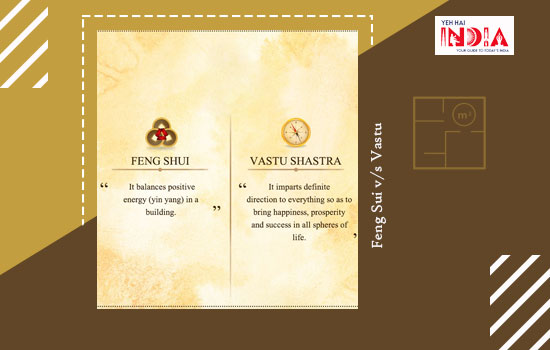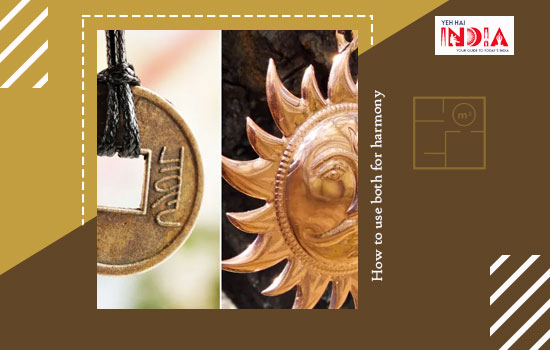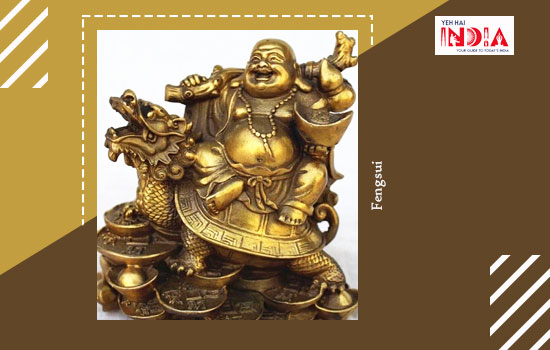Ever heard of Feng Shui before?
This article covers all about Feng Shui, its uses, and what difference it can make to your home.
What is Feng Shui?
Feng Shui is the art and practice of living in harmony with your environment to produce tangible results naturally.
Feng Shui is an ancient Chinese concept that developed over 3,000 years ago and this concept links the destiny of man to his environment.
The literal translation of the word Feng Shui is “Feng” meaning wind and “Shui” meaning water. Chinese associate both wind and water with good health. Thus, Feng Shui means good fortune.
The main focus in this Chinese system is on the movement of energy in any space through natural elements.
In Feng Shui, the energy is known as “Chi.” and correcting the movement of Chi is called a “cure.”
The main aspect of Feng Shui is to garner positive chi into one’s home so that one’s life feels both energized and balanced and there is harmony between individuals and their surroundings.
Recommended Story – “The Happyness Factory” by Mr. Yogesh Karikurve – A New Meaning to Independence
Principles of Feng Shui-

Feng Shui is based on four main principles and they are:
- The 5 Key Elements
- The Bagua Areas
- The Use of Colours
- The Commanding Position
The 5 Key Elements –
- Feng Shui uses the five-element system where the world is divided into five elements.
- These elements consist of Wood, Fire, Earth, Metal, and Water. According to Feng Shui, every individual is a blend of these elements and in order to be happy and healthy, these elements need to be balanced.
- They have to be correctly placed to benefit the members of the house as these elements stimulate Chi and promote the well-being of a person.
The Bagua Areas –
The Feng Shui Bagua map which is also known as Ba-Gua or Pakua is one of the major tools utilized in Feng Shui to analyze the energy of any given space.
Every house has number of rooms which are divided into different “energy centers” each representing important areas of life. In Chinese, Bagua means eight areas that relate to a person’s overall happiness and those are –
- South – Fame and Reputation – Fire
- Southwest – Partnership and Marriage – Earth
- West – Children and Creativity – Metal
- Northwest – Travel & helpful people – Metal
- North – Career and Life Journey – Water
- Northeast – Knowledge and Wisdom – Earth
- East – Family and Health – Wood
- Southeast – Wealth and Prosperity – Wood
The Use of Colours –
The Feng Shui concept is all about energy (Chi) and how it flows through our space. It is seen that different colours carry different energy qualities, which correspond to the energy of the five elements.
Colour may either enhance an overall room design or completely destroy it. In Feng Shui, one must be careful in using colours associated with each direction for the health and harmony of the inhabitants occupying the place.
The Commanding Position –
The commanding position is the place where one wants to spend most of their time being in that room. In this place, one can experience the best energy flow and feel good.
Feng Shui states this is the position that is diagonal from the door and furthest away from it. One must ensure that one can see the door from where one is positioned so as to get full relaxation.
Feng Shui vs Vastu –

Indians are confused about whether Feng Shui principles work for the Indian homes or not.
Since early ages, we followed the principles of Vastu Shastra (dwelling science) which developed around 12000 years ago in India whereas Feng Shui is a modern concept that came into existence in China 6000 yrs ago.
But the confusion can be eliminated as both follow nearly similar principles and an amalgamation of both these principles are being followed by pundits today.
Similarities –
- The principles of Vastu are applied to a home that is being built from scratch and in Feng Shui, the principles can be used for homes at any given time.
- Vastu Shastra is thousands of years older than Feng Shui and the principles of Feng Shui originated from it.
- Both of them are based around cosmic energies.
- Both provide remedies by using objects & tools to improve home energy.
- The principles of both are based on the flow of energy – In Feng Shui, it is known as Chi in Chinese and in Vastu Shastra, it is known as Prana or life in Hindi.
- Both Feng Shui and Vastu believe that the centre of the house is the place where all the energies combine thus believing that the centre is the most important part of the house.
- Vastu Shastra and Feng Shui both use the eight compass directions to determine placement and architecture, and five elements to attract positive energies.
Differences –
- Vastu Shastra is based on science while Feng Shui is based on geographical considerations.
- Feng Shui regards South as the most auspicious direction while Vastu believes North is the most auspicious direction.
- Feng Shui believes mute colours like beige and cream attract positive energy in the house whereas Vastu believes that the bright colours attract positive energy in the house
- Both use objects to harness positive energy in the home the only difference is Feng Shui uses Wind Chimes, Laughing Buddha and Bamboos, whereas Vastu uses the Tulsi Plant or Ganesha Idols for this.
How both Feng Shui and Vastu can be used at home to bring in the harmony?

Both Feng Shui and Vastu Shastra give importance to the same type of rooms in the house. Both pay great attention to the bedroom, the bathroom and the entry of the house.
1. Prayer room –
- Both Vastu & Feng Shui believe that the prayer and meditation rooms should ideally be located in the North-East area of the house.
- Even the North or East areas of the house are good for the location of the prayer room.
- People should face the East while praying and the idols shouldn’t exceed 6 inches in height. Prayer rooms should not be used for sleeping purposes.
2. Bedroom –
- Feng Shui and Vastu both believe that the master bedroom should be located in the southern part of the house which helps increasing family harmony.
- The bed should be placed in such a way that the headboard faces the south or west while sleeping. One should avoid sleeping with their head towards the north.A family should not take meals in the bedroom by doing so it is believed it leads to ill-health and idols shouldn’t be kept in the bedroom.
- If a house has more than one floor, then the master bedroom should be on the top-most floor and the ceiling should be level and unbroken which helps in keeping a sound mental balance.
- Children bedrooms should be in the north-west or western direction and the study should be a separate room for better concentration.
- Cash should be stored in the north.
Tips for Overall House –
- South is an ideal location for the dining room and it should be well lighted. As the south belongs to fire in five elements, hence this will make the family prosperous.
- One shouldn’t keep plants like cactus in the house.
- The north-east, north-west, north, west and east corners are considered best for a study room as this increases the creativity and brainpower of children.
- Having the study room and prayer room situated adjacent to each other is beneficial for a family.
- The main gate of the house should have two panels.
- The bathroom should be located in the east or in the north-western part of the house but never in the north-east.
- One should never buy a Buddha or bamboo plant for oneself– one should only get it as a gift.
- Buddha idol should be kept facing the entrance of the house this will bring health and happiness to the house.
- Wind-chimes should be placed in bedroom on windows helps in minimizing fights among family members.
Interesting isn’t it?
Let us know whether you are willing to give Feng Shui a try in the comments below!
Also Read – Gemstones and their Significance in India










